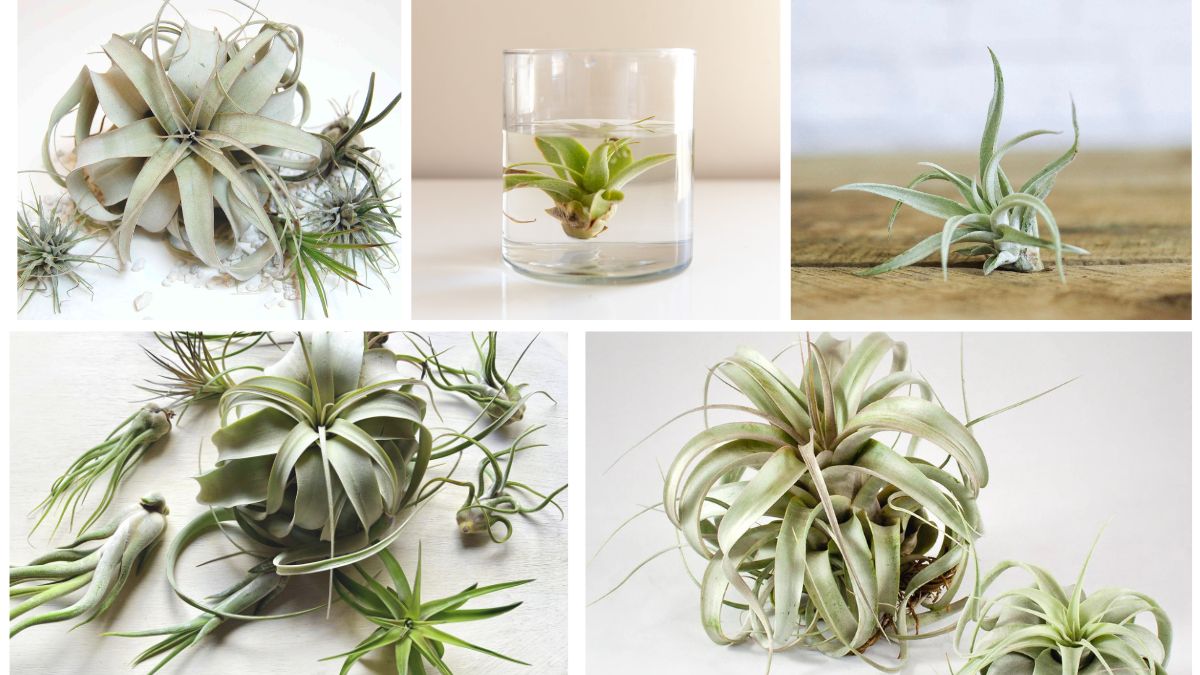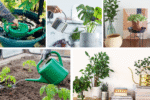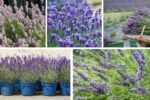Air plants, also known as Tillandsias, are unique, low-maintenance plants that don’t need soil to grow. With their striking shapes, minimal care requirements, and ability to thrive in creative displays, they’ve become a favorite for both beginner and seasoned plant lovers. Unlike traditional plants, air plants absorb water and nutrients through their specialized leaves instead of roots buried in soil. This fascinating characteristic makes them versatile and fun to display in homes, offices, and gardens.
If you’re new to air plants and wondering how to care for them, this guide covers everything you need to know—from watering and lighting to display ideas and troubleshooting common issues.
Understanding Air Plants

Air plants belong to the Bromeliad family and are native to Central and South America. In their natural habitats, they grow attached to trees, rocks, and other surfaces, relying on rainfall and humidity for survival. Since they don’t need soil, they’re perfect for decorative arrangements like glass terrariums, wall mounts, and hanging displays.
Key Characteristics of Air Plants:
- No soil required – nutrients are absorbed through leaves.
- Roots are for anchoring only – not for absorbing nutrients.
- Come in various shapes and sizes – from tiny spiky varieties to large blooming ones.
- Produce vibrant flowers – often once in their lifetime, followed by “pups” (baby plants).
Step-by-Step Guide to Caring for Air Plants
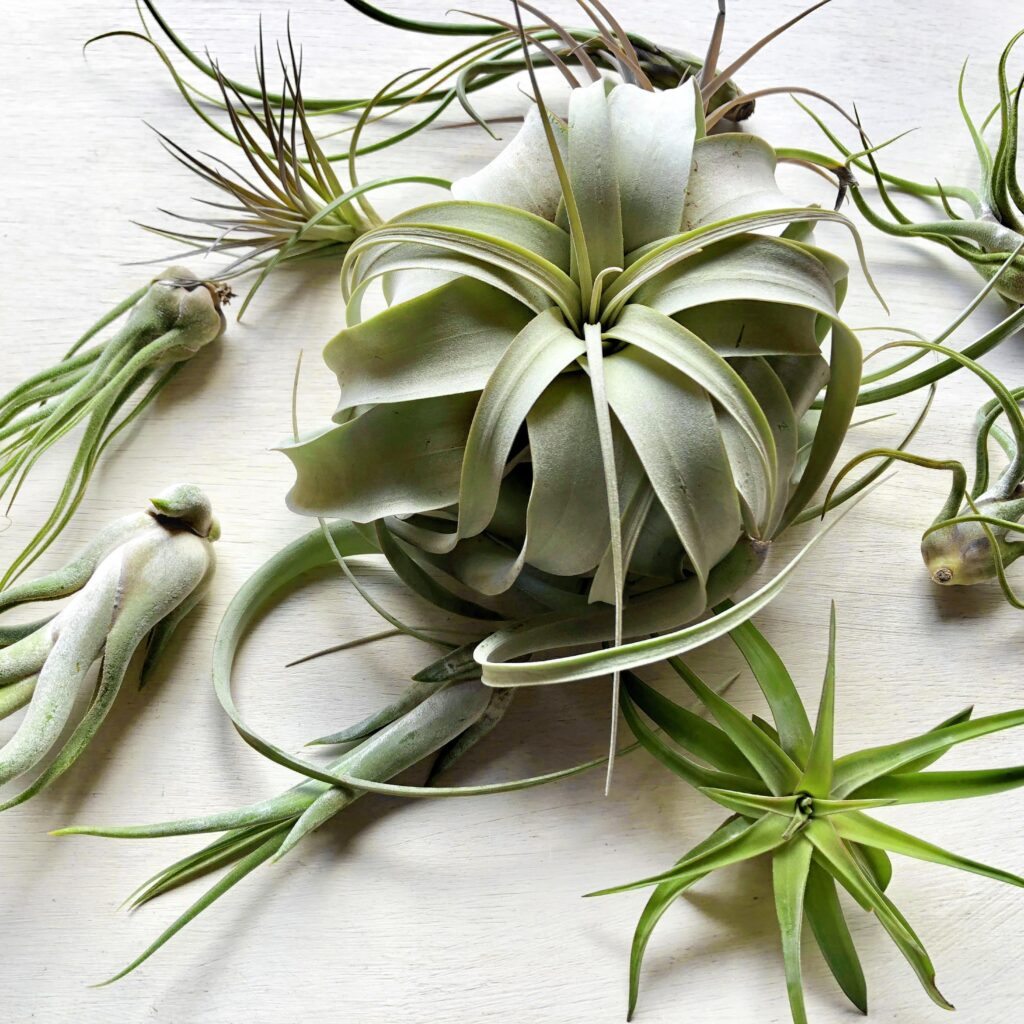
1. Choosing the Right Spot
Air plants thrive in bright, indirect light. Place them near east- or west-facing windows where they can get filtered sunlight. Direct harsh sun can scorch their delicate leaves, while low light may stunt growth.
- Indoors: Keep near a bright window or under fluorescent/LED grow lights.
- Outdoors: Place them in shaded spots where they receive morning sun and afternoon shade.
Tip: If your air plant leaves start curling or turning dull, they may not be getting enough light.
2. Watering Air Plants
Watering is the most crucial part of air plant care, and beginners often overwater or underwater them.
Methods:
- Soaking (Best Method): Submerge the plants in room-temperature water for 20–30 minutes once a week. Shake off excess water to prevent rot and let them dry upside down.
- Misting: Light misting 2–3 times a week works for plants in humid environments but may not be enough in dry climates.
- Dunking: Dip the plant in water for a few seconds, useful for mounted or delicate displays.
Seasonal Adjustments:
- Summer: Water more often (2–3 times per week).
- Winter: Water less frequently (once every 10–14 days).
Tip: If the leaves are browning or curling, they need more water. If the base feels mushy, you’re overwatering.
3. Air Circulation and Drying
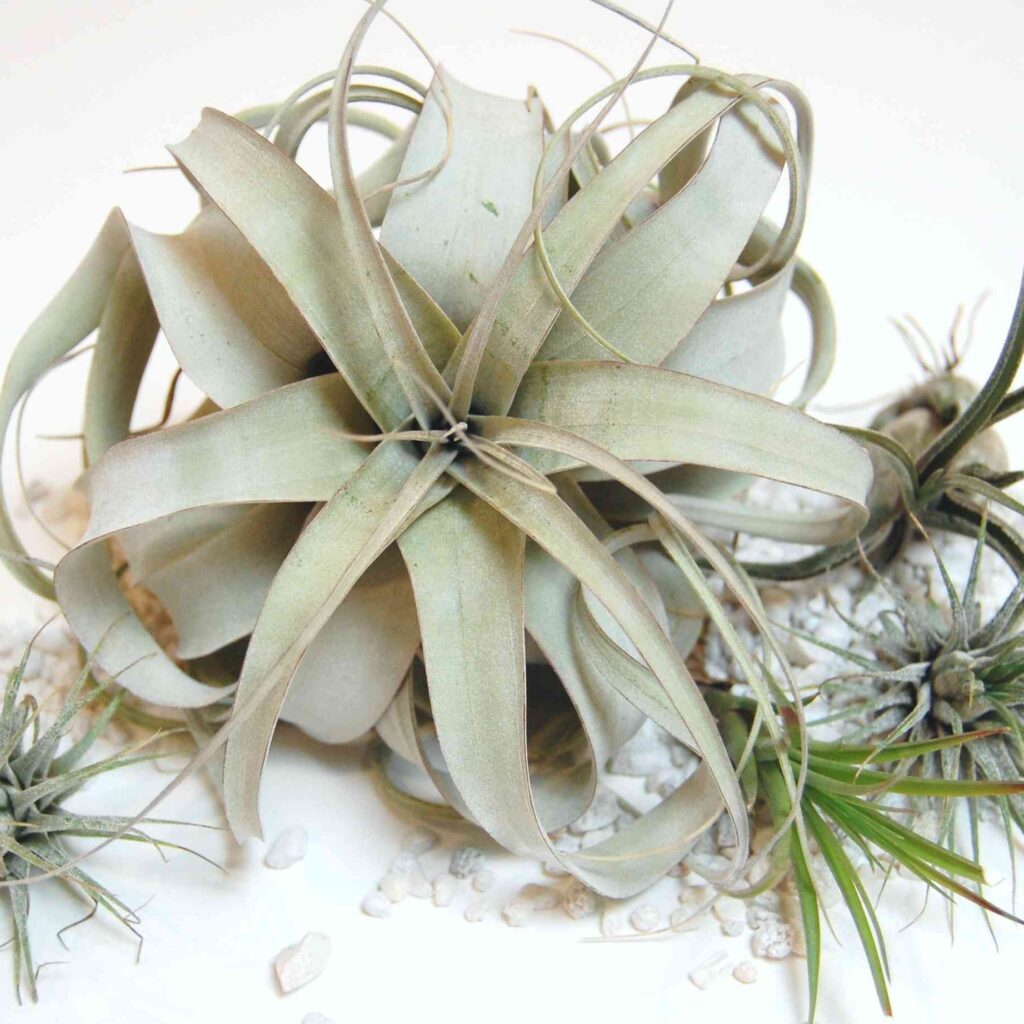
Good air circulation is critical after watering. Always allow plants to dry within 4 hours to avoid rot. Place them on a towel or upside down after soaking.
Avoid placing them in closed containers without airflow for long periods. While glass terrariums look beautiful, they should remain open or well-ventilated.
4. Fertilizing for Growth and Blooms
Air plants benefit from monthly feeding. Use a bromeliad or orchid fertilizer diluted to ¼ strength. Fertilizing encourages faster growth, vibrant leaves, and beautiful blooms.
Tip: During blooming season, fertilizing can help plants produce healthy pups (baby plants).
5. Temperature and Humidity
Air plants prefer warm, humid conditions similar to their tropical origins.
- Temperature range: 50°F to 90°F (10°C to 32°C).
- Humidity: 50–70% is ideal, but they can adapt to drier homes with proper watering.
If your home is dry, especially in winter, consider placing a small humidifier nearby or misting more frequently.
Display Ideas for Air Plants
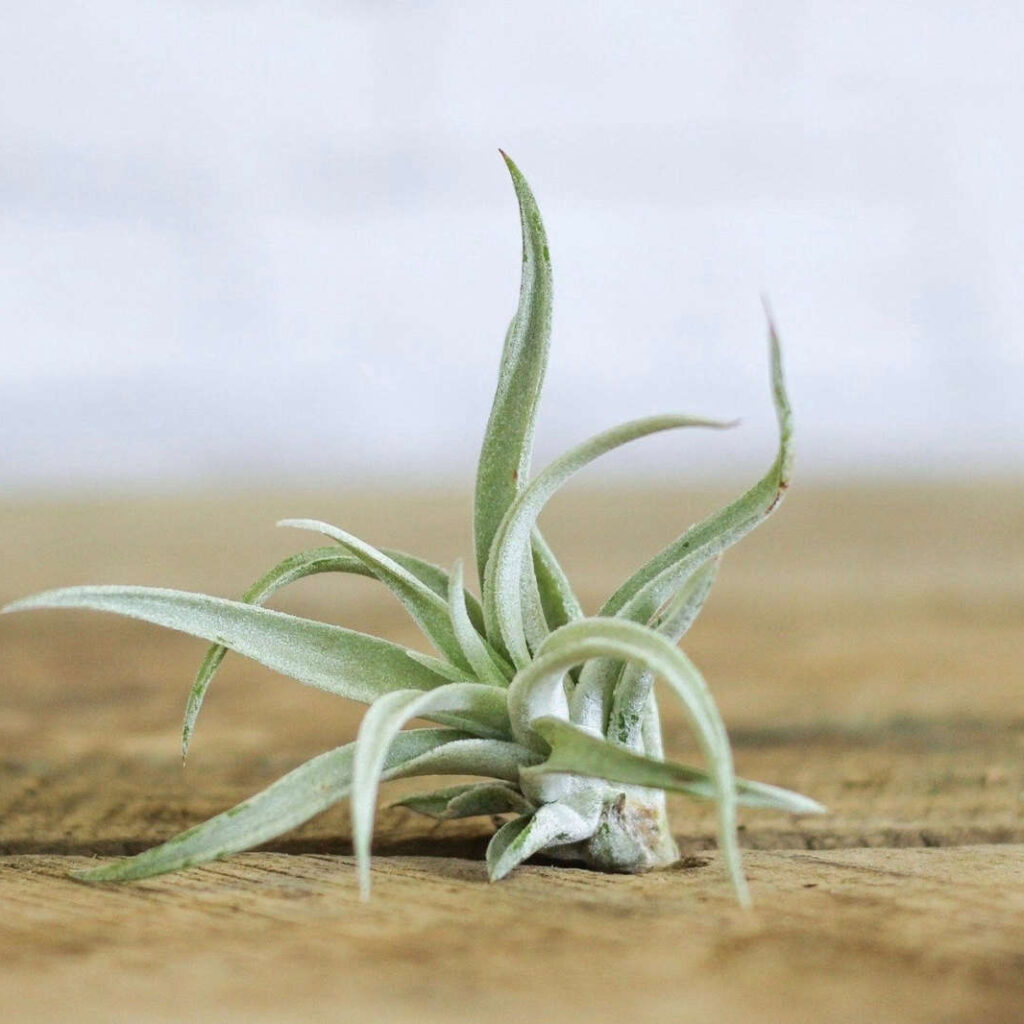
One of the most exciting aspects of air plants is their versatility in displays. Since they don’t need soil, you can get creative with how you showcase them.
- Glass Terrariums – Hang them in geometric glass terrariums filled with sand, shells, or stones.
- Mounted on Driftwood – Attach them to wood pieces for a natural, rustic look.
- Hanging Globes – Suspend them in air for a modern, floating effect.
- Wall Gardens – Create living wall art using air plants in frames.
- Shells and Stones – Place them inside seashells, crystals, or decorative stones.
Tip: Avoid planting them in soil or sealing them in airtight containers, as this will suffocate the plant.
Common Problems and Solutions
Even though air plants are low-maintenance, they can face some issues.
1. Browning Leaf Tips
- Cause: Underwatering, low humidity, or too much direct sunlight.
- Solution: Increase watering frequency and move to a less sunny location.
2. Rotting Base
- Cause: Overwatering or poor air circulation.
- Solution: Reduce watering, always dry plants after soaking.
3. Curling or Wrinkled Leaves
- Cause: Dehydration.
- Solution: Soak the plant for a few hours and resume regular watering.
4. Lack of Growth or Blooms
- Cause: Low light or lack of nutrients.
- Solution: Move to a brighter location and fertilize monthly.
Propagation: Growing New Air Plants
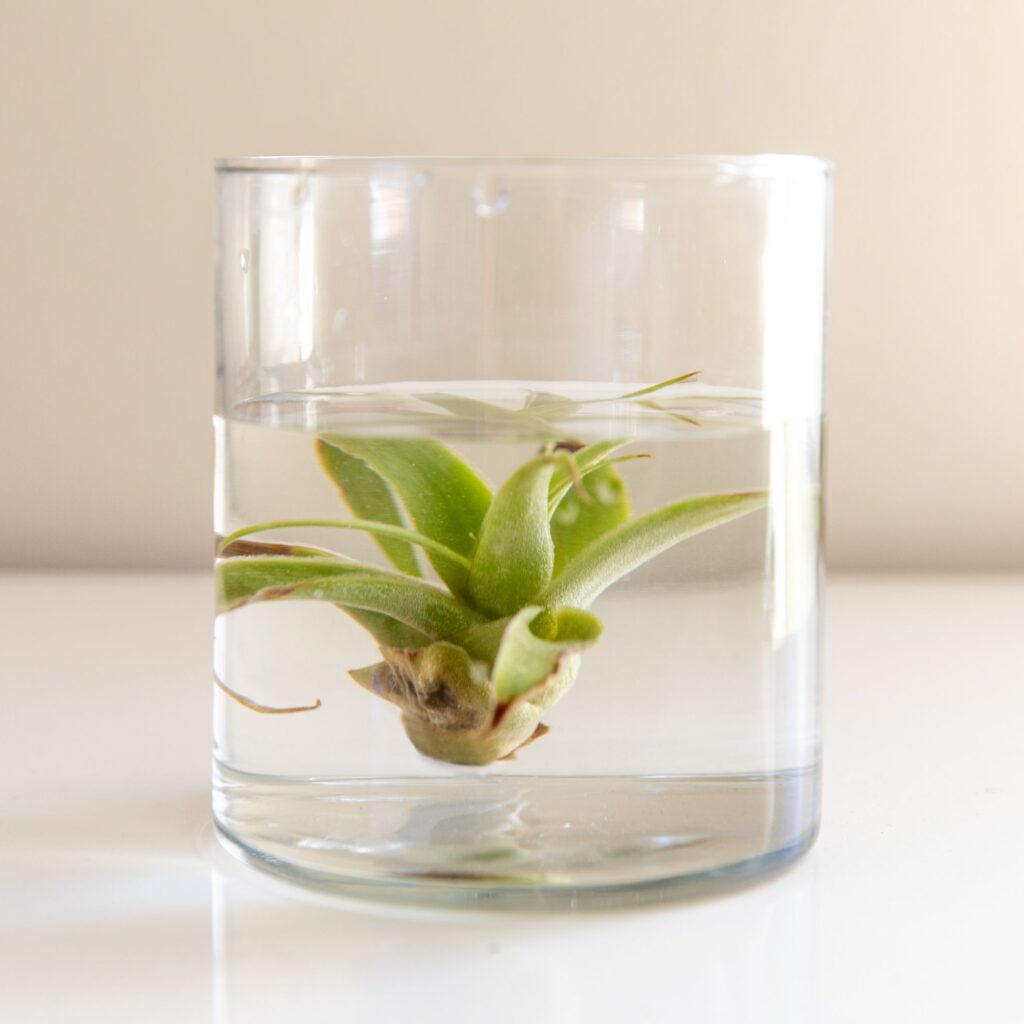
After blooming, air plants naturally produce “pups.” These small plants grow at the base of the parent plant.
- Let pups grow until they’re at least one-third the size of the parent before gently separating.
- You can keep pups attached for a clump effect or separate them to create new displays.
Tip: Healthy plants can produce multiple pups, giving you a growing collection over time.
Why Air Plants Are Perfect for Beginners
- Low Maintenance: Minimal watering and no soil make them easy to care for.
- Versatile Décor: Can be placed in creative arrangements indoors or outdoors.
- Educational Value: Great way to learn about plant biology without complex gardening.
- Pet-Friendly: Most air plants are non-toxic to pets.
Final Thoughts
Air plants are fascinating, adaptable, and stylish plants that can thrive with just a little care. By providing the right light, water, and air circulation, you can enjoy their sculptural beauty for years. Their low-maintenance nature makes them perfect for beginners, while their unique growing habits provide endless creative display opportunities.
Whether you keep them in glass terrariums, mounted on driftwood, or hanging in globes, air plants bring a touch of nature and artistry into your living space. With the right care, they’ll reward you with vibrant colors, stunning blooms, and adorable pups.
If you’re just starting your plant journey, air plants are the perfect choice to begin with—easy to grow, hard to kill, and endlessly rewarding.
